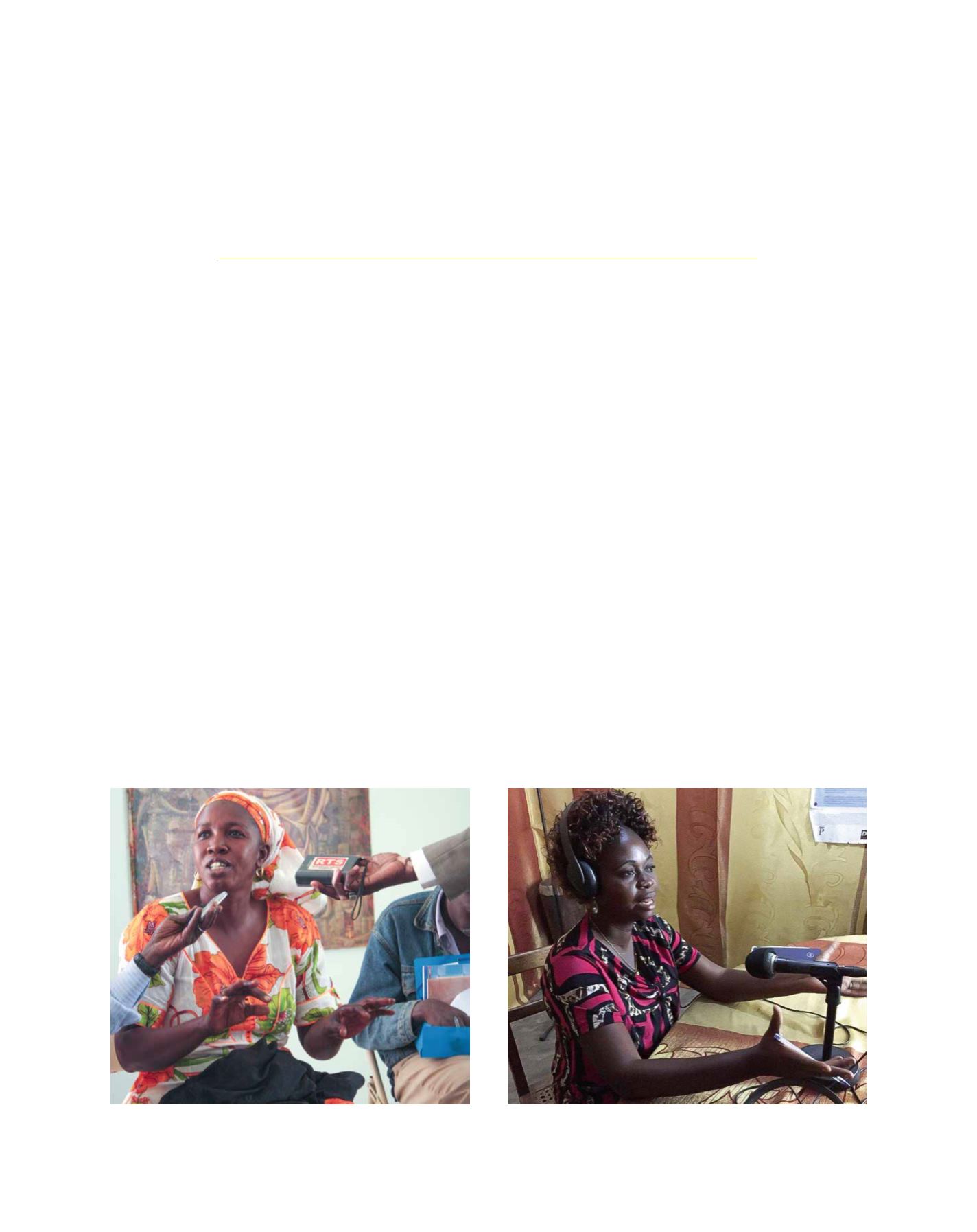

[
] 46
FAO Dimitra Clubs – boosting rural
women’s empowerment using information
and communication technologies
Christiane Monsieur, Eliane Najros, and Andrea Sánchez Enciso,
Food and Agriculture Organization of the United Nations
T
hrough theDimitraClubs implemented in sub-Saharan
Africa, by the Food and Agriculture Organization of
the United Nations (FAO), rural communities discuss
and solve their common problems and take their own devel-
opment in hand in a sustainable way. This participatory
communication approach leads to changes that improve
people’s livelihoods and gender equality. In this process,
information and communication technologies (ICTs) such
as solar radios, mobile phones and apps are used as enablers
for socioeconomic empowerment and women’s leadership.
All over the world, rural women make important contributions
to agriculture and rural economies.
1
Nevertheless, compared
with men, women face gender-specific inequalities that are
barriers for the socioeconomic growth of their communities
and countries. This is particularly the case in sub-Saharan
Africa, where over half (52 per cent) of the rural population
lives in extreme poverty, earning less than $1.25 a day.
2
In this region, women have less access than men to produc-
tive resources, including land and inputs, training, extension
and financial services, information, technologies, ICTs,
markets etc., and their access to basic services such as educa-
tion and health is limited.
Women’s disadvantaged position is further exacerbated by the
fact that they are generally not involved in decision-making or
policy processes in the agricultural and rural sectors. Their voice
is not heard and/or does not count, at different levels (house-
holds, organizations and communities). Being less informed
about opportunities, they are less able to make informed choices.
ICTs have rapidly spread, including in the developing world
where mobile phones’ penetration at the household level has
surpassed access to electricity and improved sanitation.
3
In
only 10 years, worldwide the number of Internet users has
gone from 1 billion in 2005 to 3.2 billion at the end of 2015.
4
Their proliferation has led to important social and economic
transformations, boosting socioeconomic growth, expanding
job opportunities and improving services.
Yet in 2016 over half of the world’s population is still offline,
particularly in Africa, where most of the Internet non-users
(75 per cent) are present.
5
Although mobile subscription has
ICTs can be drivers for rural women to raise their voices and actively
participate in decision-making processes
Community radio stations are used to relay information requested by the
clubs, broadcast the debates, and facilitate exchange and networking
Image: Senegal, Yannick De Mol
Image: The Democratic Republic of the Congo, Christiane Monsieur
A B
etter
W
orld
















